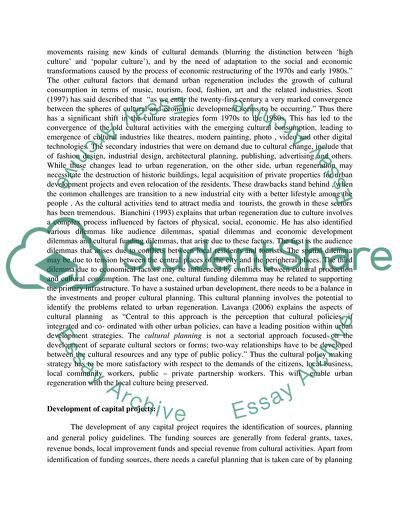Cite this document
(The Development of the Cultural Capital Projects Contributing to Urban Term Paper, n.d.)
The Development of the Cultural Capital Projects Contributing to Urban Term Paper. Retrieved from https://studentshare.org/culture/1738070-describe-the-development-of-the-cultural-capital-projects-contributing-to-urban-regeneration
The Development of the Cultural Capital Projects Contributing to Urban Term Paper. Retrieved from https://studentshare.org/culture/1738070-describe-the-development-of-the-cultural-capital-projects-contributing-to-urban-regeneration
(The Development of the Cultural Capital Projects Contributing to Urban Term Paper)
The Development of the Cultural Capital Projects Contributing to Urban Term Paper. https://studentshare.org/culture/1738070-describe-the-development-of-the-cultural-capital-projects-contributing-to-urban-regeneration.
The Development of the Cultural Capital Projects Contributing to Urban Term Paper. https://studentshare.org/culture/1738070-describe-the-development-of-the-cultural-capital-projects-contributing-to-urban-regeneration.
“The Development of the Cultural Capital Projects Contributing to Urban Term Paper”. https://studentshare.org/culture/1738070-describe-the-development-of-the-cultural-capital-projects-contributing-to-urban-regeneration.


